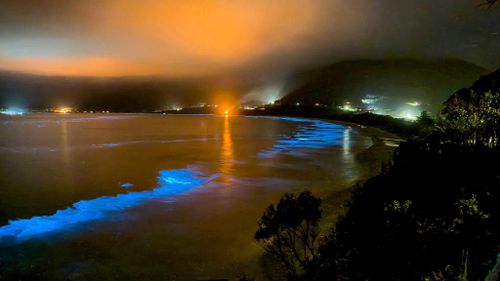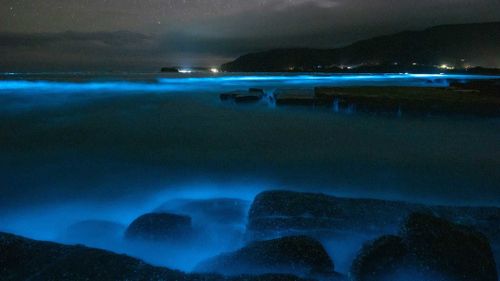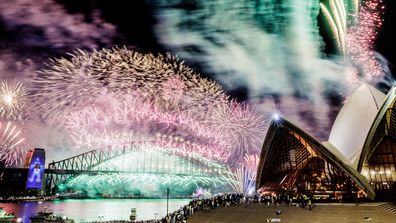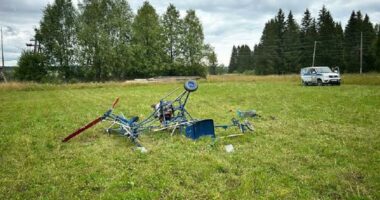The state is in the midst of a once-in-a-decade bloom of the algae, formally known as Noctiluca scintillans — which translates to sparkling night light.
Photographer Jules Witek captured the scene at Pirates Bay Beach, in Eaglehawk Neck.

Witek said the algae lit up the ocean so it looked like something from the movie Avatar.
“There was so much blue light along the shore. Parents had their hands full as children were stepping into the water to be amongst it,” he said.
“It was the biggest bioluminescent bloom I’ve ever seen by a long shot.”
The algae appears as red streaks in the daytime and glows electric blue at night.
Tasmanian biologist Dr Lisa-ann Gershwin said although it was quite common to see the algae off the Tasmanian coast, she had personally not seen a bloom as big as this since 2015.

“Tassie has become one of the global hotspots for this, and so we do see it quite often, but not at this scale,” she said.
“This is epic, truly epic.”
Gershwin said the algae was an invasive pest that has been around for decades.
Although it was extremely beautiful, the algae was a sign the ecosystem was off-balance and it could be harmful to marine life, she said.

Crowds go wild for New Year’s Eve celebrations
“As spectacular as it is for humans to behold this, it’s equally harmful for the organisms that live in the water,” she said.
“It eats up just vast amounts of phytoplankton, which is the plant plankton, and zooplankton, which is the animal plankton, and it just wipes out the ecosystem, right at the ankles.”

“So it’s really quite devastating for the ecosystem in that way, just cutting off the food chain.”
The algae also used up oxygen levels in the water, suffocating other marine life, and exuded ammonia into the water which could burn the delicate tissues of marine life, Gershwin said.
However, the algae was not harmful to humans, she added.








